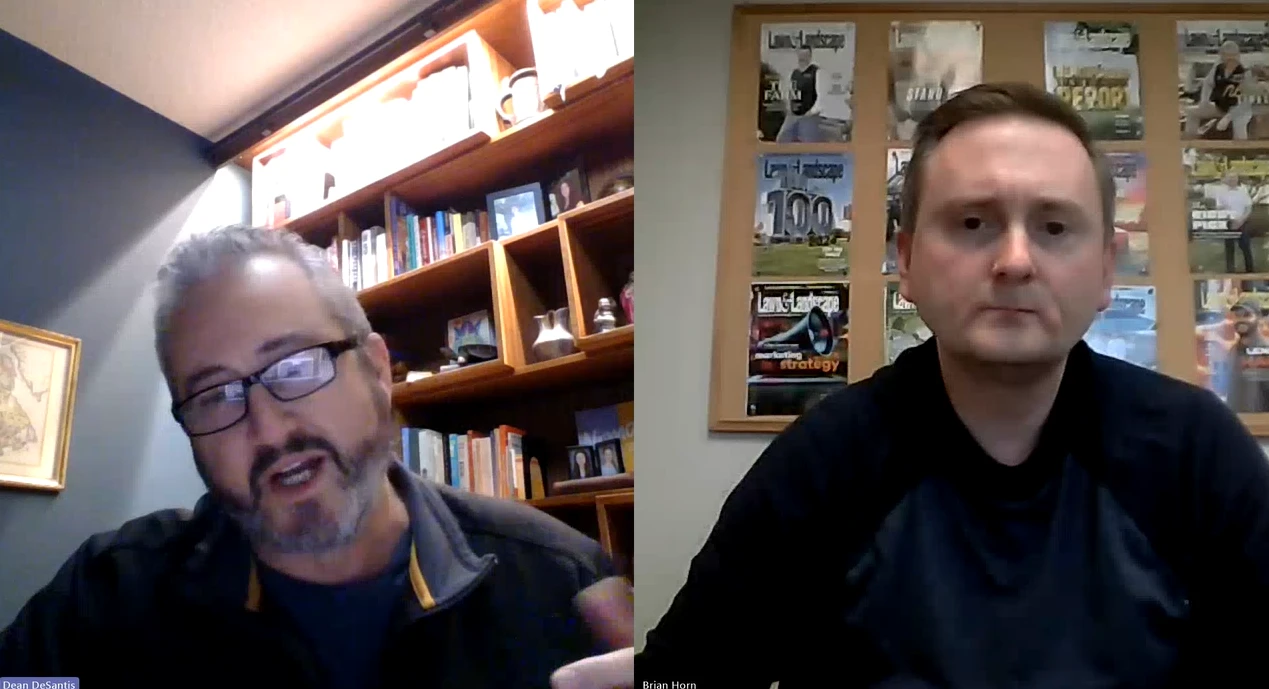Many of us in landscape maintenance find ourselves relying on pesticides to help maintain a site's appearance. Generally, using pesticides is a cost-effective way to deliver what our clients desire. Pesticides save significantly on labor costs and can often correct problems very quickly. But we also know that pesticides can be costly, do not always perform well and may be harmful if they aren’t used correctly.
Taking the time to learn the rules of pesticide application has many benefits. When you fully understand how to best use pesticides, then you benefit economically and get good control the first time at the lowest possible rate. This saves you the time required for re-treatment, money and helps address health or environmental concerns by minimizing the amount used.
These rules apply to ornamentals and turfgrass in warm or cool climates, and this philosophy transcends plants, pests and geographic regions.
1. Learn to identify pests and diagnose diseases. This may sound far too basic, but I’ve been amazed throughout the years by the number of times people have either misdiagnosed problems or simply didn’t diagnose them at all. It goes without saying that most insecticides won’t manage disease problems and vice versa. The most common problem with misdiagnosis comes from looking only at symptoms the pest causes. Yellowing turfgrass could mean water stress, fertility problems, diseases, insects or nematodes. Finding the actual pest problem can ensure proper diagnosis.
2. Make sure you have a basic understanding of pest biology. This is very important because many pests have periods in their development when they are most susceptible to pesticides. By targeting the pesticide application to the time when the pest is most susceptible, you can increase the likelihood of outstanding control. For example, target first instar white grubs in turfgrass. These are most susceptible to insecticides when the product is applied in mid to late summer while the grubs are still very small.
Understanding the product you are going to use is also important. For example, products like halofenozide and imidacloprid work even better when they are applied at egg laying or egg hatch.
3. Select the proper products for maximum effectiveness. Make sure the product you purchase is labeled and recommended for the pests you want to control. Don’t simply go to your storage and take what is in inventory simply because it is convenient. If it isn’t one of the better products for that pest, then you most likely will not have saved any time or money. Read and follow the label carefully. Doing so is not only the law, but the label also has information about product use that will help increase your success.
Pesticides should be selected for their efficacy against the pest you wish to control and with a number of other considerations in mind. Is there water nearby? If so, then factors such as water solubility and fish toxicity are important to consider.
Pesticide selection should be on a site-by-site basis. What kind of equipment do you have to apply products? Can you do a better job with liquid or granular formulations? Are there re-entry restrictions? Does the product require immediate irrigation?
4. Be sure your application equipment is properly calibrated and use the proper rate. Poor application is one of the most common causes of pesticide failure in the landscape. Nozzles and pumps wear, equipment gets knocked around and settings change. An occasional check of calibration and output is a real money saver.
Environmental factors can make pest control more difficult. With soil insects, such as white grubs or mole crickets, many factors are working against good control. The very fact that these pests are in the soil gives them a big advantage. They are more difficult to detect and often aren’t found until they’ve done considerable damage. By the time they are discovered, they are also quite large and harder to control.
The soil itself acts as a buffer and helps protect these insects. Some insecticides may be trapped on the grass itself, while many products are bound in the thatch and other organic matter. This prevents the insecticides from ever getting to the target site — the grubs and mole crickets themselves. Slow or no movement of insecticides deep into the soil is a major limiting factor in trying to control these insects.
How do these products work at all? Control is generally obtained by the small amount that makes it a little deeper in the soil and by the movement of the insects near the soil surface. This is a double-edged sword. It demonstrates that in turfgrass and most landscape settings, pesticide use may not be a threat to ground water. At the same time, these characteristics make it difficult to move pesticides to the root zone where the insects reside.
Linked with controlling soil insect pests is the availability and use of irrigation. Irrigation is important for several reasons. One is product safety. Some products must be watered in immediately after application to reduce surface residues and potential human and animal exposures.
5. Irrigate to move pesticides into the thatch and soil to minimize ultraviolet degradation and improve control and residual activity. Some products require moisture for activation. Granular formulations have a granule with a pesticide attached, and water washes the product off the granule and to the site of action — soil.
Irrigation following an insecticide application for soil insect control is important. Irrigation or rainfall is often necessary before a pesticide will begin to work. Generally, thorough irrigation is beneficial following insecticide application when you are trying to control soil insects, such as white grubs or mole crickets. Studies on insecticide movement in soil haven’t always shown increased movement with increased irrigation, but a ¼- to 2-inch application of water helps initiate the control process.
When soils are dry, many insects move deeper to stay in a zone with adequate moisture. The deeper they are in the soil, the more difficult they are to control. When insects reside deep in the soil, the likelihood they will contact the insecticide is limited. In addition, when soil conditions are dry and hot, there is a much greater likelihood that a portion of the pesticide will be bound quite tightly to the dry thatch and organic matter. Under these conditions, some loss of insecticides will occur through evaporation. The bottom line is that hot and dry conditions usually reduce insecticide effectiveness.
Irrigation cools the soil surface, moistens the thatch, and most importantly, helps move the soil insects closer to the soil surface. Many turfgrass managers have adopted the practice of both pre-treatment and post-treatment irrigation when attempting to control soil insects. This lessens the amount of pesticide bound to the thatch, reduces evaporation of some insecticides and encourages the insects to reside closer to the soil surface. In effect, pre-treatment irrigation in conjunction with post-treatment watering helps guarantee results. Pre-treatment irrigation does not replace post-treatment watering, it merely acts as an enhancement.
There are times when irrigation following insecticide application is not desirable. Consider the fact that many insects, such as armyworms and cutworms, feed on the turfgrass above the soil surface. To control these pests, it is important to place the insecticide at the appropriate site.
As a general rule for foliage-feeding pests, do not irrigate following insecticide application. This keeps the product on the foliage of the turfgrass, where the insects will readily come in contact. Exceptions to this approach would be if the label requires irrigation following application, or if the product had systemic activity and needed watering to be taken up through the plant roots.
Another factor in caterpillar control is the application's timing. Smaller worms are easier to control, like grubs and mole crickets, but the time of day is also critical to success. Cutworms and many other caterpillars feed at night when they are small, and once they are larger they feed all the time. A general rule for caterpillar control is to treat late in the day. This makes certain that the caterpillars receive a fresh dose of the insecticide when they begin to feed at night. Since caterpillars feed on the above-ground portion of the turfgrass, you can imagine that if the turfgrass is mowed, and in particular, if the clippings are removed within a day or two of treatment, control will be diminished.
For top performance from any pesticide, identifying the pest problem is paramount. But at the same time, more than just identifying the pest is necessary to obtain maximum control. Understanding the biology of your pests will get you a long ways toward outstanding performance out of whatever products or approaches you use for pest control. This is true for the use of synthetic pesticides, biorational approaches, or organic pest control. Like in any battle, knowing your enemy is critical to success.
In almost 20 years in the business, I've seen numerous situations that can cause pesticide failures. I’ve observed that pesticides rarely fail. Pesticides are generally quite reliable, but under environmental extremes, may actually fail. A working knowledge of what situations produce less-than-desirable results can serve you well.
One of the most common explanations for failures is that the insects have become resistant to the insecticides. Fortunately, resistance to insecticides in the landscape is a fairly rare event. It has been a problem in the Southeast for people trying to control southern chinch bugs. Multiple generations of this pest and numerous applications of insecticides to control it are a recipe for resistance.
On occasion, spray tank water that measures a pH value above 7 can cause a more rapid breakdown of the pesticide. This is referred to as alkaline hydrolysis. It is a phenomenon that occurs quite frequently, particularly in geographic regions where ground water is very alkaline, or where people use municipal water for spray tanks and that water has been rendered more alkaline in processing. This problem can be checked with a $30 pH meter and corrected with a minimal investment in acidifiers or buffers.
Another form of pesticide breakdown is by microbes in the soil. Microbial degradation is a process by which pesticides are broken down by microorganisms in the soil. This eliminates the pesticides and metabolites after they have completed their task of controlling the pests. In rare instances where the same pesticide is used again and again in the same location, the microbes build to a high level. Often, the result is a rapid breakdown of the pesticide before it gets a chance to perform effectively.
Rotating products through the years is often recommended to reduce the likelihood of resistance. Oftanol (isofenphos) was one of the first products documented to suffer from microbial degradation when it was used year after year for grub control.
Certainly, pesticides are valuable tools. Use them wisely and understand what makes them work best. If you do this, you will be rewarded with outstanding performance. The end result will be that your job is easier and the results of your labor are enhanced.
The author is a turfgrass entomologist at North Carolina State University, Raleigh, N.C.

Explore the March 2000 Issue
Check out more from this issue and find your next story to read.
Latest from Lawn & Landscape
- Wilson360 adds Daniel Grange as new consultant
- Batman and business
- CH Products releases new tree stabilizer
- Savannah Bananas founder Jesse Cole to speak at Equip Exposition
- Catch up on last year's Benchmarking report
- Davey Tree promotes Kevin Marks as VP of Western operations
- Bobcat Company names 2025 Dealer Leadership Groups
- Green Lawn Fertilizing/Green Pest Solutions awards employee new truck for safe driving





